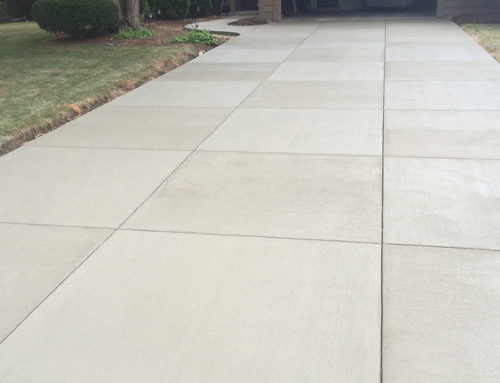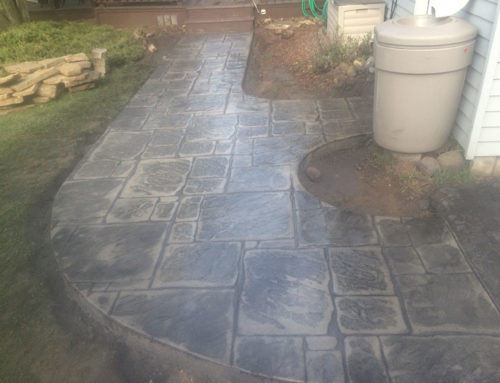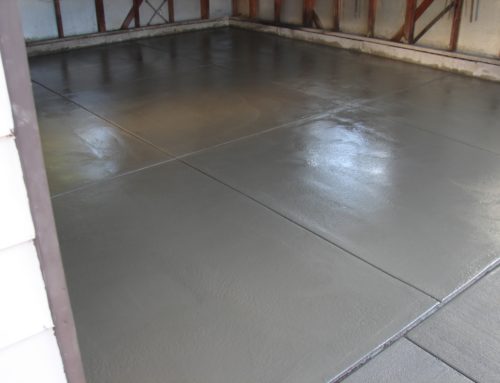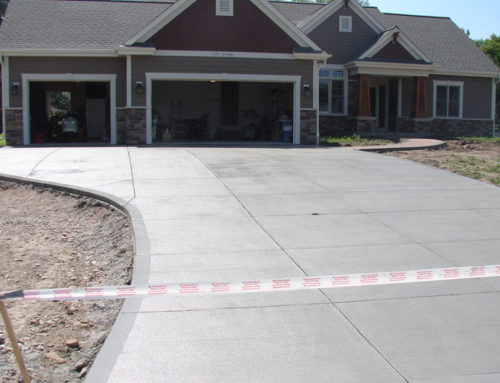Stamped concrete is an alternative to traditional concrete surfaces that provides a distinct look and can easily beautify your home. Although this type of concrete is long lasting, it does require special care however, especially during the brutal winter season.
Each year you can expect negative temperatures and brutal winter storms. However, this doesn’t have to ruin your nicely constructed stamped concrete. Here are four winter maintenance tips to help you get through this winter season and avoid damaging your outdoor surfaces.
Seal Your Stamped Concrete
A great way to prevent winter wear and tear on your concrete is to apply a sealant. This removes any debris and dirt from damaging your stamped concrete. A sealant goes a long way in improving the lifespan of your concrete surface by minimizing damage from moisture and preventing salt from penetrating the surface.
Remove Ice and Snow Quickly
To clear your stamped concrete, it is better to use a plastic shovel rather than a metal one. A metal shovel is more damaging and can chip your concrete, leaving your surface exposed to other potential damage.
Additionally, it’s important that you remove any ice or snow accumulation from the surface as soon as possible. One of the worst possible threats to your stamped concrete is ice that is constantly freezing and thawing. This can cause your concrete to expand and contract, damaging the patterns and causing an even bigger issue of cracks in the concrete.
If you find that cracks are beginning to form, you can likely expect additional large cracks. This is due to water making its way in between the sections of your concrete. The most important takeaway is that protecting your stamped concrete from the cycle of freezing and thawing early makes it much easier to repair.
Melt Ice the Correct Way
It is strongly advised not to use any deicing chemicals following a concrete driveway installation. This is because they don’t protect the surface and can instead cause negative effects.
Also, tossing salt on ice can prove disastrous for your stamped concrete. Rather than using salt or chemicals to melt the ice, use sand instead. This allows for better traction and is the safest way to ensure that your driveway is skid-free.
Clear Away Excess Slush
On the drive home, salt from the street may stick to your car’s wheels or undercarriage. Generally speaking, if you park in your driveway, the salt will likely fall onto your concrete, causing damage. In addition, the slush from melting snow can accumulate under your car.
Try to wipe down your car before parking it in your driveway. You can also remove the snow and slush by shoveling or plowing it. This will help prevent moisture from refreezing on the surface.
Prepare Your Stamped Concrete for the Winter Season
In short, maintaining your stamped concrete during the freezing Milwaukee winters will not be an easy task. But it’s well worth the effort. Patterned, textured, and otherwise decorative concrete is well worth protecting.
If you are in need of further tips or other concrete services, contact JBS Construction to receive your free estimate! We proudly serve all of Southeastern Wisconsin, and you can count on our expertise in concrete construction to provide high-quality work for your next project.






